African sculptures are leading a creative renaissance, with sculptors consistently pushing boundaries and underlining the continent’s artistic identity.
These works are not just expressions of individual creativity; they are profound statements that reflect Africa’s rich cultural heritage, social dynamics, and modern challenges. Through these sculptures, artists weave together tradition and innovation, producing pieces that resonate globally, while remaining deeply rooted in African experiences.

1. Ben Enwonwu’s “Atlas”
Symbolizing strength and burden, this sculpture depicts a muscular figure kneeling beneath an unseen yet substantial weight. Although it alludes to the myth of the Greek Titan, Atlas is rooted in African experiences. It represents the weight of colonialism, cultural expectations, and the struggle for independence.
It also reflects Enwonwu’s personal journey as an African artist navigating the complexities of identity in a post-colonial world. As it captures the resilience of the African people, it embodies the strength and grit needed to bear the weight of colonial dynamics, while forging a new path towards progress.
2. Sokari Douglas Camp’s “Europe Supported by Africa and America”
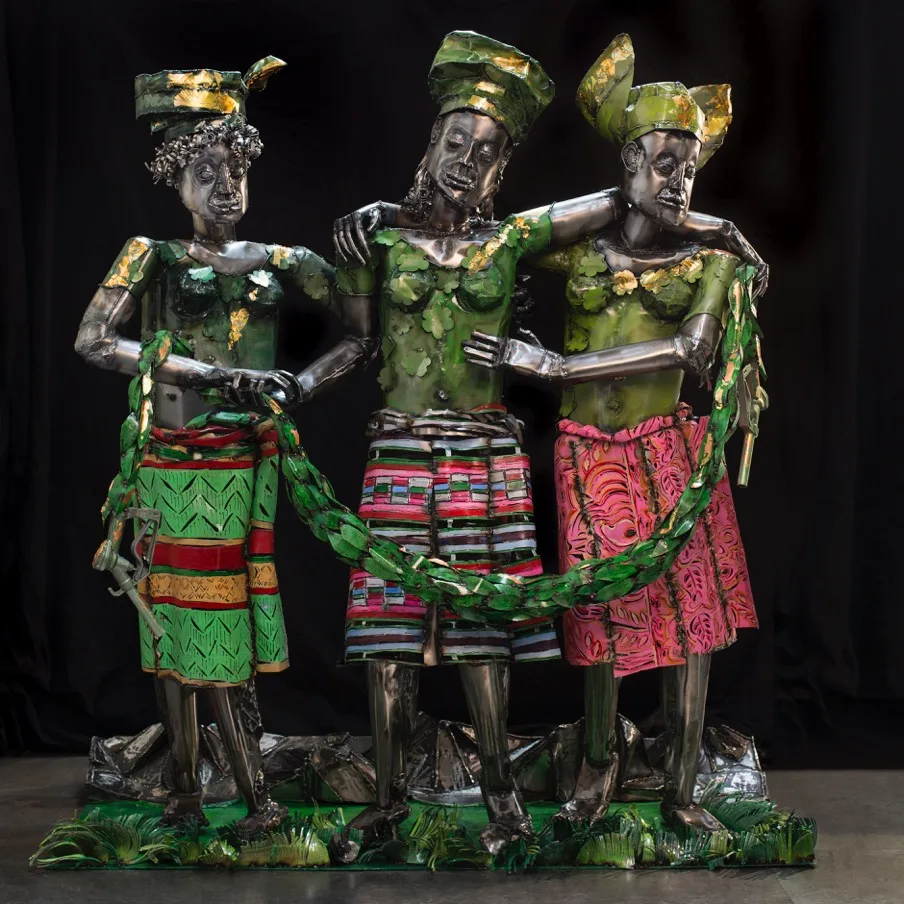
The sculpture, Europe Supported by Africa and America by Sokari Douglas Camp offers a powerful commentary on the historical exploitation and interconnectedness between Europe, Africa, and the Americas.
Reinterpreting William Blake’s 18th-century drawing from an Afrocentric lens, Sokari depicts the three continents as female figures standing side by side. Europe, portrayed as fragile and frail in the centre, is supported by Africa and the Americas, reversing the traditional narrative of dominance. The figures are adorned in clothing representing their continents, but Sokari adds an African touch with gèlè head ties and African-inspired attire, reshaping the narrative to emphasize Africa’s enduring influence.
A notable feature is the garland that wraps around the women, ending in a gas pump, symbolizing the confining effect of the oil industry’s power—particularly in Nigeria, Sokari’s homeland. The gas pump also represents the exploitation of indigenous resources, which has sustained the wealth of the Western world. Sokari’s sculpture contrasts sharply with Blake’s colonial depiction, where Africa and the Americas are shown in armlets of enslavement, while Europe is adorned with pearls. By reimagining this narrative, Sokari underscores the continuing legacy of exploitation and the complex interdependence of these continents.
3. Willie Bester’s “Trojan Horse”
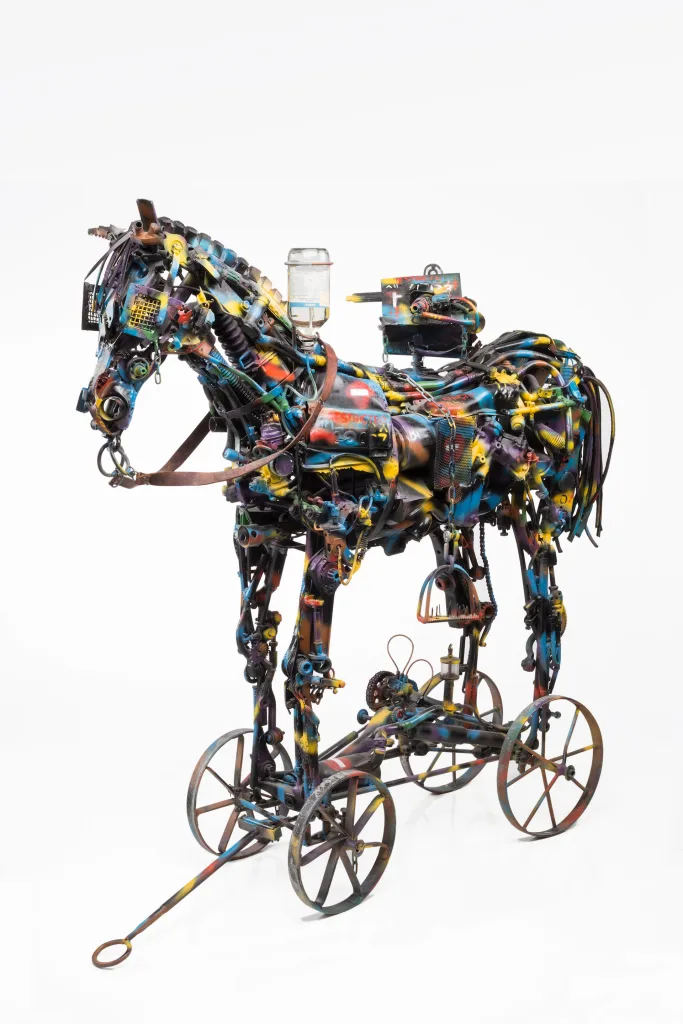
Willie Bester’s 3 partTrojan Horse sculptures draw a poignant parallel to the ancient Trojan Horse myth. In the myth, Greek soldiers used a deceptive wooden horse to infiltrate the city of Troy and achieve a surprise victory. Similarly, in the 1985 Trojan Horse Massacre, police officers concealed themselves in a rail truck, ambushing unarmed protesters with violence.
Made from materials like bombshells and machine guns, the sculptures underscore the hidden and brutal nature of this attack. Through his work, Bester critiques the cold brutality of apartheid, using the Trojan Horse legend to highlight the destructive tactics of state violence.
4. Dr. Lilian Mary Nabulime’s Lives of Broom Heads
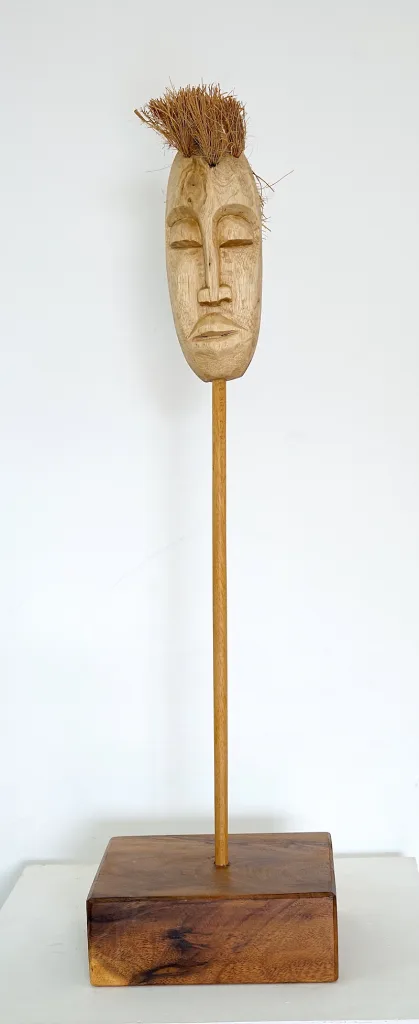
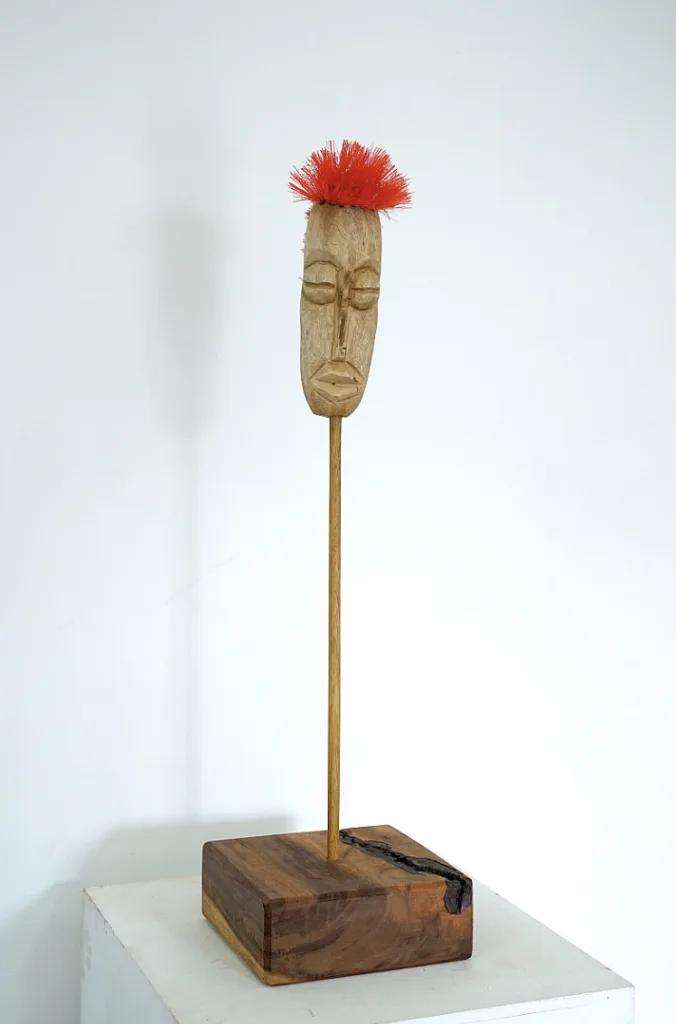
In Lives of Broom Heads, Nabulime gives consciousness to the broom heads by merging environmental conservation with artistic expression. She transforms them from mere functional objects to animated characters by imbuing them with distinct personalities, alluding to the spirit of craftsmanship.
She also captures the duality of entities, inviting observers to experience the interplay between performance and individuality. This evokes self-reflection and fosters a deeper connection to the work.
5. Ibrahim El-Salahi’s “Meditation Tree”
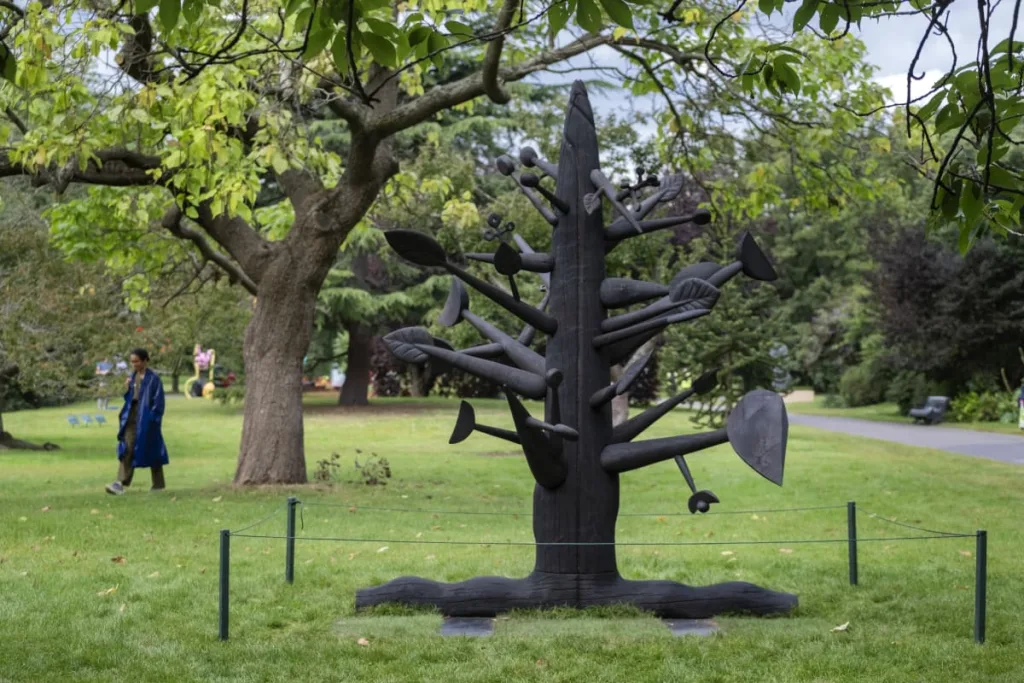
Ibrahim El-Salahi’s Meditation Tree symbolizes growth, life, and spiritual contemplation, serving as a metaphor for personal and collective transformation. The sculpture features a tree-like form adorned with intricate carvings and abstract elements, reflecting the natural world’s complexity and vitality in connection with human nature.
Drawing inspiration from traditional Sudanese culture, particularly from the Al-Haraz region, and integrating these cultural elements into a contemporary art framework, it highlights the artist’s deep connection to his heritage while exploring themes of identity, evolution and autonomy.
Meditation Tree not only showcases El-Salahi’s innovative approach to art but also invites viewers to engage in introspection and connect with both their inner world and the broader natural environment.


